The Red Wings Power-Play: No More Excuses
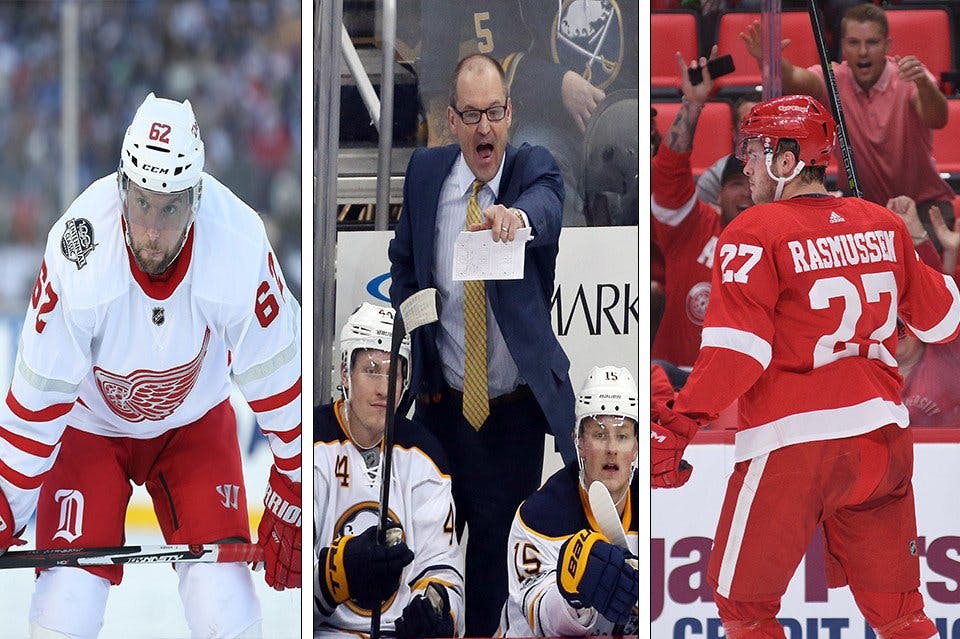
By Cameron Kuom
5 years agoThis Red Wings power-play over the last two years has been nothing short of terrible. You know your man-advantage is bad when Steve Ott is used to give it a spark.

After posting a power-play percentage of 15.08% in 2016-17 – The team’s worst in over thirty years – head coach Jeff Blashill made it clear that expectations were high.
“I said to our group we have to have elite specialty teams, and I think the penalty kill is in that range and we’d like to get the power play up into that top 10 range,” Blashill told the Detroit Free Press at the start of the 2017-18 season. “If you have a top-10 PP and a top-10 PK, you give yourself a better chance to be a playoff team. So we are going to keep striving for that.”
The mindset of wanting to see improvement was there, but the resources weren’t.
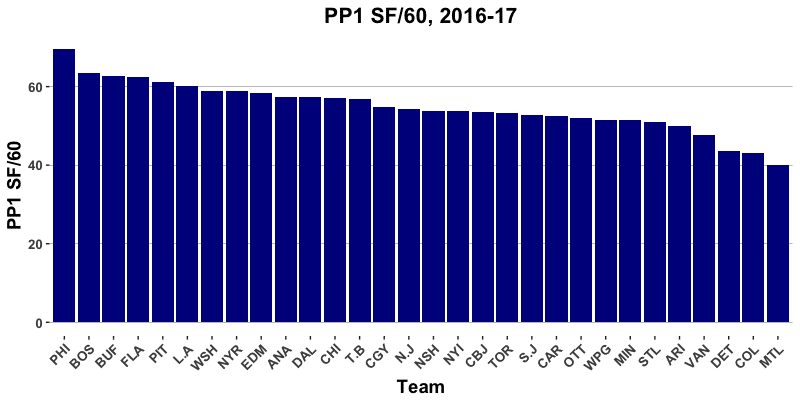
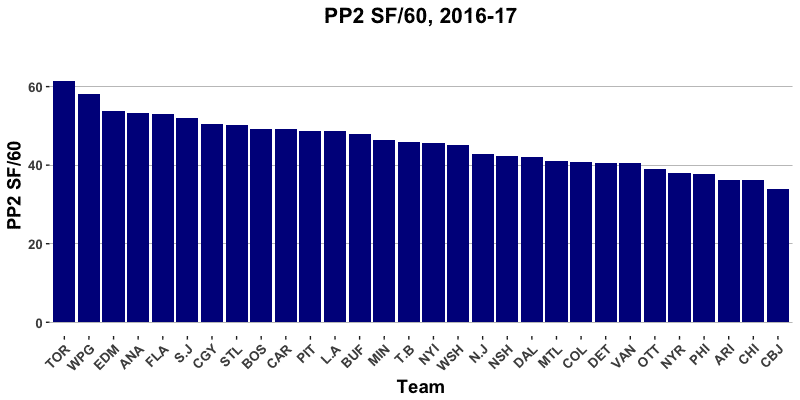
(From The Athletic’s Tyler Dellow)
In 2016-17 the club was one of the worst at generating shots. The only significant change made was subtracting Thomas Vanek and adding Martin Frk the following season. In 2017-18 the team saw slight improvement, posting a power-play percentage of 17.52%. However they still finished in the bottom ten of the league.
The added emphasis did show, with Detroit modernizing its approach to using four forwards and one defensemen, which has shown to be the best option.
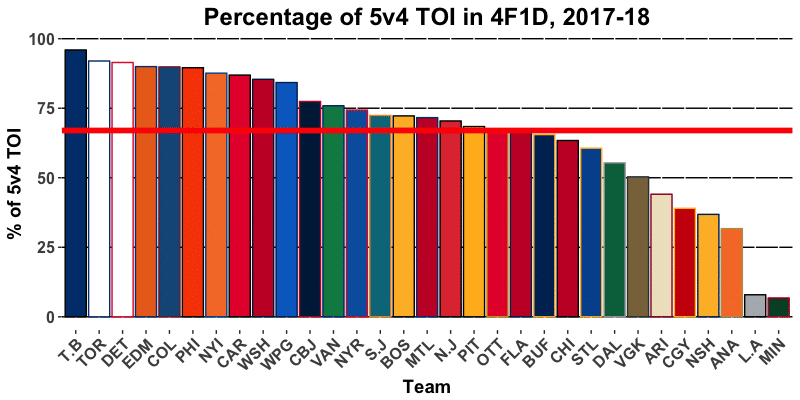
(From The Athletic’s Tyler Dellow)
We’ve seen the potential the power-play has, such as their run from October to November when they posted a power-play percentage of 21.8%.
This upcoming season looks to be a different story, in fact, the power-play is a reason for optimism. The commitment to adding resources that was missing last season was recognized. The first of which was bringing back Mike Green and Frk. Two players who are expected to contribute on the special teams. 2017 first round pick Michael Rasmussen looks like all but a lock to make the big leagues, and will be given a big responsibility as the net front man. Vanek was also brought back for a reunion, and could be the perfect mentor to Rasmussen, as he has built up a reputation as one of the best net-fronts in the league. To top it all off, Dan Bylsma was brought in, and was known as a power-play specialist in his days with the Buffalo Sabres and Pittsburgh Penguins.
There really can’t be any more excuses, especially with there being roster room for prospects Filip Zadina and Filip Hronek, who could both improve the power-play as well.
That is a lot to take in, so I’ll break it down.
Rasmussen and Vanek
Last season the net-front was primarily played by Anthony Mantha and Justin Abdelkader. Mantha served to be useful in that role, leading the team with nine power-play goals. Abdelkader on the other-hand didn’t have as much of an impact.
But now add Rasmussen and Vanek into the mix and things could get scary for opposing goalies. Starting with Rasmussen, he has excellent hand-eye coordination and creates havoc on second chances. It also helps that he is 6’6″ and 220 pounds. Expect to see a lot of this:
The addition of Vanek is massive. Redirecting pucks is his bread and butter. I can’t think of a better player to mentor Rasmussen. This past season he recorded fifteen power-play points. Around the net he is just deadly, having sixteen of his twenty-five goals (including playoffs) scored near the net.
Inserting these two also allows for Anthony Mantha to switch to the outside. His elite shot will help generate more high-danger scoring chances which is just more genos for Rasmussen and Vanek.
Dan Bylsma
After firing John Torchetti, the Wings brought in Dan Bylsma to take over the forwards and power-play. Excluding the 2008-09 season (Bylsma served as an interim coach for twenty-five games) he has been an NHL head coach for seven seasons, five with the Pittsburgh Penguins and two with the Buffalo Sabres. Below displays how his teams have performed on the power-play:
| Team | Season | PP% | Rank |
| PIT | 09-10 | 17.2 | 19th |
| PIT | 10-11 | 15.8 | 25th |
| PIT | 11-12 | 19.7 | 5th |
| PIT | 12-13 | 24.7 | 2nd |
| PIT | 13-14 | 23.4 | 1st |
| BUF | 15-16 | 18.9 | 12th |
| BUF | 16-17 | 24.5 | 1st |
Whats impressive about this is that four of the seven seasons he had a top five power-play. His first two full seasons in the league took some adjusting, but after that his power-play units have taken off as some of the best in the league. The argument can be made that having Sidney Crosby and Evgeni Malkin helped boost those numbers tremendously, but lets take a look at the regression the Sabres had.
After posting the best power-play in the league (in a year where Jack Eichel missed twenty games), they plummeted to the twentieth ranked power-play without Bylsma in 2017-18.
With the pieces Bylsma is getting in Detroit, there is plenty of opportunity to work his magic.
Zadina and Hronek
This is where Detroit’s true commitment is tested. Zadina and Hronek are both question marks as to whether or not they will make the roster. Some moves may have to be made for Zadina (potentially waiving Frk), but one more spot on defense is available and Hronek could be the taker.
Their impact on the power-play could be significant. Starting with Zadina, he brings that elite shot that can break open the game. He can play on either circle and be a major scoring threat.
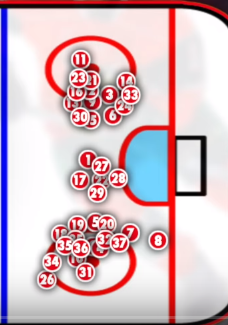
(From NHL Draft Central)
The above is Zadina’s goal chart from this past season in the QMJHL. As you can tell, he is a major threat from the outside. He’ll help increase scoring chances, and more importantly goals for.
Filip Hronek being involved with the special teams could also make a big difference. Detroit could use another right-handed shot on the power-play, with Green, Vanek and Frk being the only other righties. It would also allow for Niklas Kronwall to come off the power-play. Hronek’s ability to get shots through could be a major upgrade.
The potential is here. The personnel have been added. Its time to start seeing some results.
Recent articles from Cameron Kuom





